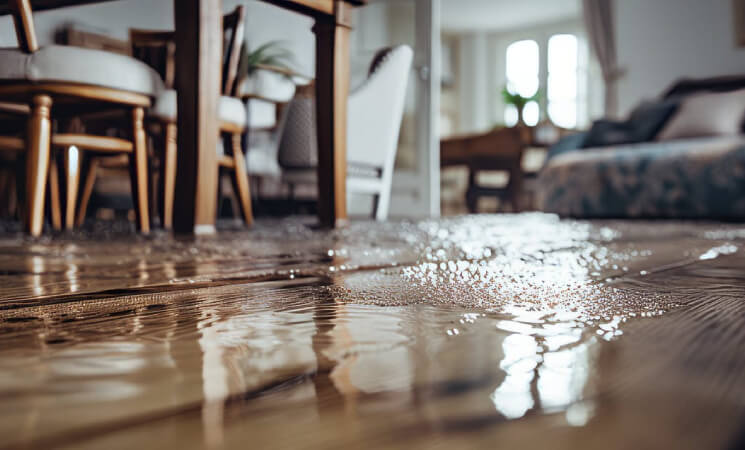You may think that re-entering your home is safe after the fire has been put out and the smoke is gone. Although the yellow tape may be gone, your home is still filled with Volatile Organic Compounds (VOCs) created when things in your home are burned. Yes, the flames are gone, but many of your home goods continue to produce poisonous gases and hazardous particles to breathe. Some of these hazards create immediate problems. Others take years to take effect. That’s why you should never enter your home after a fire and leave it to the professionals who understand post-fire environmental hazards.
Volatile Organic Compounds (VOCs)
Think about everything that burns in a house fire: the fabric from your clothes and cleaning chemicals found beneath the kitchen sink. Even more dangerous items that may be in your home include pesticides and automotive fluids in the garage, plastics, fiberglass, and electronics throughout the home. Smaller items, such as medications and baby products, are dangerous when exposed to fire. As these products burn, they produce toxic chemicals in the smoke and later release gases. Some of the most common toxins in smoke include:
- Acrolein
- Arsenic
- Benzene
- Chromium
- Dioxins
- Formaldehyde
- Furans
- Hydrochloric acid
- Hydrogen cyanide
Many chemicals, such as hydrogen cyanide, are so lethal that the military uses them. If the military used such chemicals as weapons, you can feel confident that you don’t want them in your own lungs. If you want to reduce the amount of VOCs in your home, this link has some great tips and what you can do to make your home safer.
Beware of Dioxins and Particulates
When you think of hazardous materials in your home, you may think of items such as lead paint, asbestos, and black mold. However, the most hazardous material next to nuclear waste is a dioxin called TCDD. These and other dioxins reside in soot and smoke particles, which are created due to fire combustion. The dioxins are created when carbon or chlorine is heated. Both of these chemicals are found in numerous products and PVC plastics throughout your home. Dioxins are extremely dangerous. They can cause cancer, worsen cancer, cause growths in the colon and lungs, and many other serious health issues. Research has shown that dioxins are so toxic that there does not appear to be a safe level of exposure. In addition to dangerous gases, a burned structure also contains particulates. These particles contain similar toxins that cause damage. Some particles are large and get inhaled into the lungs. Other particles are so small that they can get into your bloodstream. Once there, the toxins contained in these particles can cause disease and even death.
How To Be Safe
You should not enter your home after a fire unless firefighters or Mr. Restore have deemed it safe. If you do re-enter your home, you should wear the proper equipment. This includes such things as:
- Have testing to determine what hazardous chemicals are in your home.
- Wear respiratory protection of the highest level needed for these chemicals.
- Test respirators to make sure they are functioning correctly.
- Never move, clean, or remediate items in your home without following the proper steps to minimize toxin exposure.
- Make sure all areas are well-ventilated.
- See a doctor immediately if you notice any symptoms related to toxic exposure to chemicals.
Although the fire has stopped burning, possible damages continue long after the flames are gone. That’s why Mr. Restore recommends staying out of your home while the professionals handle the cleanup and restoration of your home. If you experience a house fire, immediately contact Mr. Restore. We will clean up all toxic materials, including smoke, fire, and possible water damage, after the fire has been put out. Our technicians have 50 years of experience dealing with fire damage and know how to assess and restore your home.






